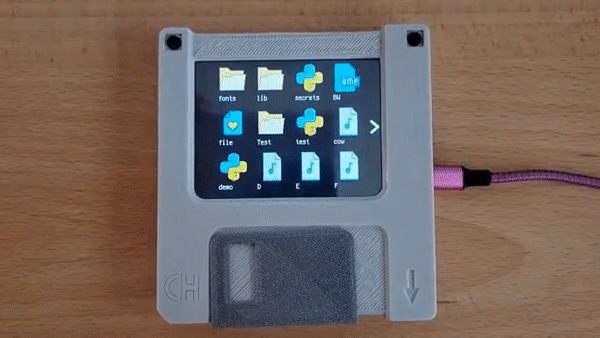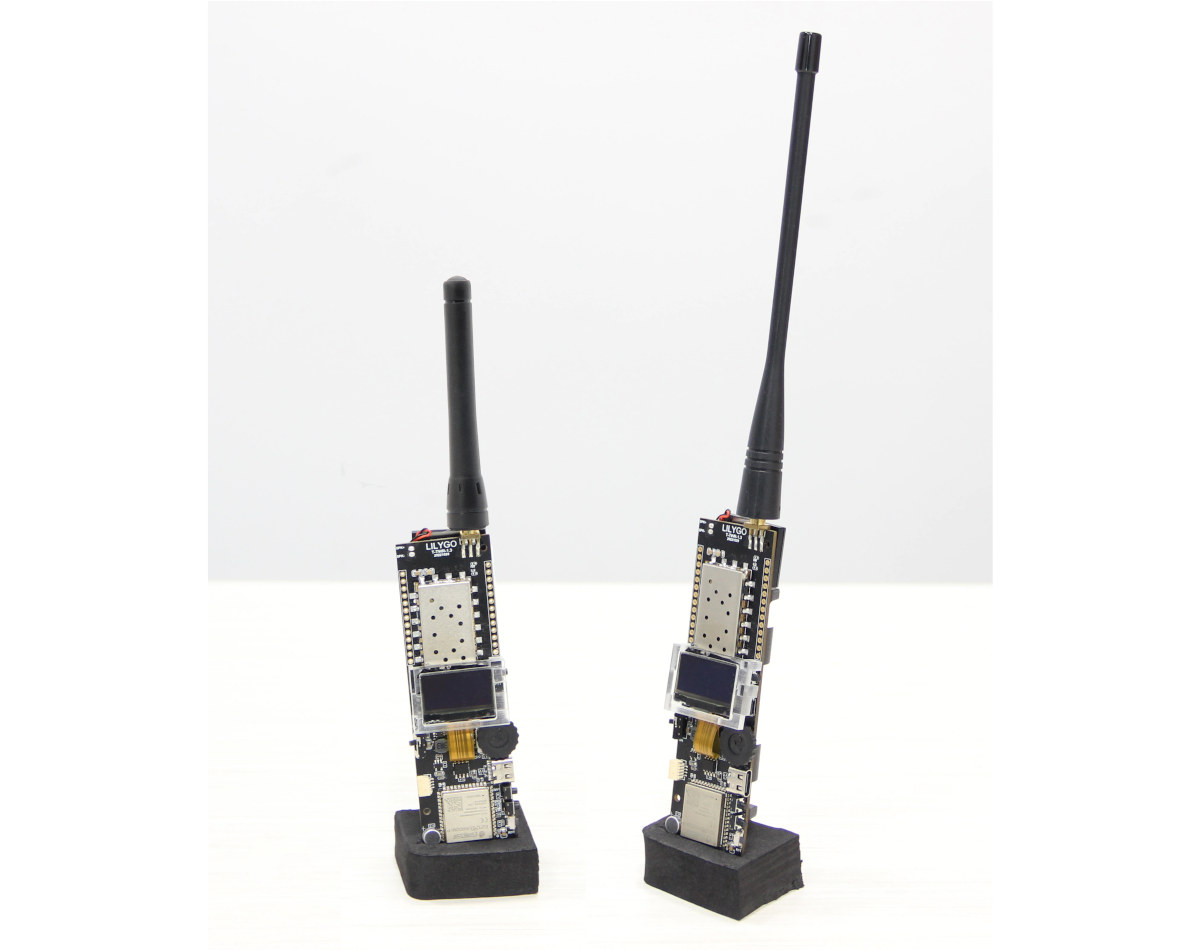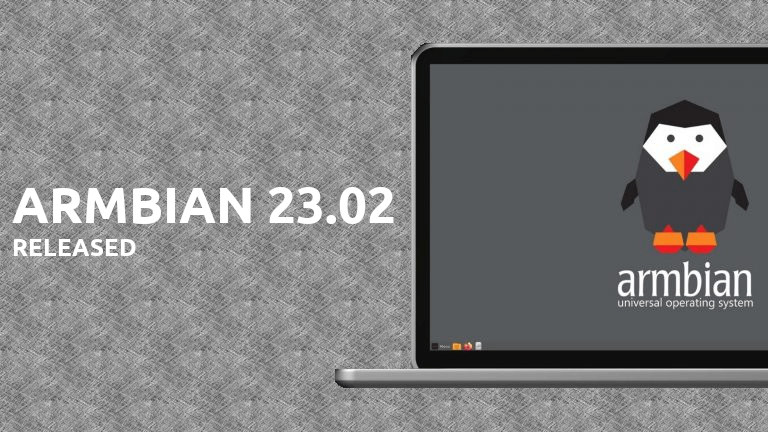Arduino GIGA R1 WiFi board brings the STM32H7 dual-core Cortex-M7/M4 microcontroller found in the Portenta H7 boards to the larger Arduino Mega/Due form factor with up to 76 GPIO pins. As its name implies, the board also comes with a WiFi 4 (and Bluetooth 5.1) module, as well as an audio jack, a USB Type-C port for programming, a USB 2.0 Type-A host port, and extra connectors for a display and a camera. Arduino GIGA R1 WiFi board specifications: Microcontroller – STMicro STM32H747XI Cortex-M7 @ 480 MHz + M4 @ 200 MHz MCU with 2MB dual-bank Flash memory, 1 MB RAM, Chrom-ART graphical hardware accelerator System Memory – 8MB SDRAM Storage – 16MB QSPI NOR flash Connectivity – 2.4GHz WiFi 802.11b/g/n up to 65 Mbps and Bluetooth 5.1 BR/EDR/LE via Murata 1DX module Display – 20-pin header (J5) Camera – 20-pin Arducam camera header (J6) USB 1x USB Type-C port […]
GHLBD Android calculator mini review – An Allwinner A50-based Android 9.0 calculator
I found this GHLBD calculator on a platform selling second-hand electronic products. Three labels of this product appeal to me: “Calculator”, “Android 9.0” and “Allwinner A50“. If you only look at the appearance, this calculator is not much different from that of ordinary calculators, but the Android operating system is running on it and the screen tells me that it is definitely not an ordinary calculator. When I bought it, I only spent 69 RMB ($10 US). I didn’t really have a use case for it, but curiosity drove me to buy one. I decided to introduce it and disassemble it to check out the hardware design. Function demonstration of GHLBD calculator Press and hold the ON and OFF keys on the keyboard to turn on the calculator. The Allwinner A50 processor icon and Android logo show up in the boot animation. Here, you can preliminarily confirm that the promotional content […]
Firefly AIO-3588SG – A compact, low-profile 8K SBC with WiFi 6 and Gigabit Ethernet
Firefly AIO-3588SG is a compact, low-profile SBC with Gigabit Ethernet, WiFi 6, and an 8K capable USB-C port with DisplayPort that is based on the company’s Core-3588SG module powered by a Rockchip RK3588S octa-core Cortex-A76/A55 processor with up to 32GB RAM and 256GB eMMC flash. The board is designed to be as thin as possible and includes a low-profile RJ45 Ethernet jack which should make it suitable for projects and products that require high performance in a thin form factor such as robotics, digital signage, virtual reality headsets, etc… Firefly AIO-3588SG specifications: System-on-module – Firefly Core-3588SG with SoC – Rockchip RK3588S octa-core processor with 4x Cortex-A76 cores @ up to 2.4 GHz, 4x Arm Cortex-A55 cores, Arm Mali-G610 MP4 GPU, 6 TOPS NPU, 8Kp60 video decoder, 8Kp30 video encoder System Memory – 4GB, 8GB, or 16GB (32GB optional) 64-bit LPDDR4, LPDDR4x, or LPDDR5 Storage – 16GB, 32GB, 64GB, 128GB, or […]
Floppy thumb drive integrates Adafruit PyPortal display based on Microchip SAMD51 MCU
Anne Barela’s Floppy Thumb Drive project houses the Adafruit PyPortal internet display in a 3D-printed enclosure that looks like a 3.5-inch floppy disk, just a bit thicker. The computer-in-a-floppy-disk project runs CircuitPython code to list the first 12 files stored in the flash and can display photos or animations, play audio, or execute scripts. The project consists of three main parts: The Adafruit PyPortal internet display with Microchip SAMD51 (ATSAMD51J20) Arm Cortex-M4F microcontroller @ up to 120 MHz with 1 MB flash, 256 KB SRAM Display – 3.2-inch 320 x 240 color TFT display with resistive touchscreen Audio – Speaker Storage 8MB flash storage optional microSD card (not used in the project). ESP32 for WiFi and Bluetooth connectivity (not used in the project) Sensors – Light and Temperature sensors Misc – NeoPixel RGB Micro USB to USB cable 3D printed files for the front cover, back door, front door, disk, […]
Intel Processor N100 mini PC with 8GB LPDDR5 memory sells for $156 and up
Topton is selling a mini PC based on the Intel Processor N100 Alder Lake-N quad-core processor with 8GB LPDDR5 RAM for $156.44 and up depending on the selected SSD capacity. But despite its low price, the specifications are not too bad with dual 4K video output thanks to HDMI 2.0 and DisplayPort interfaces, two Gigabit Ethernet ports, WiFi 5 and Bluetooth 4.2 connectivity, four USB ports including one USB 3.0 port, and an audio jack. Specifications: SoC – Intel Processor N100 Alder Lake-N quad-core processor @ up to 3.4 GHz (Turbo) with 6MB cache, 24EU Intel HD graphics @ up to 750 MHz; TDP: 6W System Memory – 8GB LPDDR5 4800MHz RAM Storage M.2 socket for M.2 2280 SATA SSD Support for 2.5-inch SATA SSD / HDD up to 7mm thick MicroSD card slot Video Output 1x HDMI 2.0 up to 4Kp60 1x DisplayPort up to 4Kp60 Audio – 3.5mm […]
LILYGO T-TWR is an ESP32-S3 board with an SA868 Walkie-Talkie module
LILYGO T-TWR is an ESP32-S3 development board fitted with an SA868 Walkie-Talkie module and a UHF or VHF antenna, a speaker, a microphone, a small 0.96-inch OLED, and a 18650 battery holder, plus some I/Os for expansion. Equipped with an ESP32-S3-WROOM-1-16NR8 module, the T-TWR offers WiFi 4 and Bluetooth 5.0 connectivity, a dual-core processor with 16MB flash and 8MB PSRAM, and enables users to design their own Walkie-Talkie, while its expansion capabilities allow the control of devices. LILYGO T-TWR specifications: Wireless module – Espressif ESP32-S3-WROOM-1-N16R8 module with ESP32-S3 dual-core LX7 microprocessor @ up to 240 MHz with Vector extension for machine learning, 16MB FLASH, 8MB PSRAM, WiFi 4 and Bluetooth 5 LE/Mesh Display – 0.96-inch OLED with 128×64 resolution based on SSD1306 I2C display driver SA868 Walkie-Talkie module based on RDA1846S chip Bandwidth: 12.5 kHz/25 kHz Sensitivity: -124 dBm Support 1.6W or 1.8W mode. The latter is not recommended due […]
PlanetPC XR1/XR2 Rockchip RK3568/RK3588 Mini PC comes with a touchscreen display for control (Crowdfunding)
PlanetPC XR1/XR2 are Arm Linux mini PCs based on Rockchip RK3568 or RK3588 processor respectively with a unique design featuring an integrated touchscreen display for control. Planet Computers has designed several unique computing devices over the years such as the Cosmo Communicator 2-in-1 smartphone and computer or Astro Slide 5G transformer smartphone, and the British company has now come up with a mini PC preloaded with Ubuntu with a touchscreen screen interface, dual 4K/8K video output, dual Gigabit Ethernet and more. PlanetPC XR1/XR2 specifications: SoC PlanetPC XR1 – Rockchip RK3568 quad-core Cortex-A55 processor up to 2.0 GHz with Arm Mali-G52 2EE, 0.8 TOPS NPU PlanetPC XR2 – Rockchip 3588 octa-core Cortex-A76/A55 processor up to 2.4 GHz with Arm Mali-G610 MP4 GPU, 6 TOPS NPU System Memory & Storage PlanetPC XR1 4GB LPDDR4 32GB eMMC flash Optional 512GB, 1TB, 2TB M.2 NVMe Optional up to 14TB SATA HDD or 2TB SATA […]
Armbian 23.02 out with Linux 6.1, DietPi 8.14 adds experimental RISC-V support
Two of the most popular projects providing images for Arm and RISC-V single board computers have released new updates with Armbian 23.02 adding Linux 6.1-based Debian and Ubuntu images, and DietPi 8.14 adding experimental RISC-V support for the StarFive VisionFive 2 SBC and new Arm boards. Armbian 23.02 Quoll Linux 6.1 is the latest LTS kernel, so Armbian is now providing Ubuntu 22.04 Jammy and Debian 11 Bullseye images based on Linux 6.1.y for boards that support it, as well as the first development images based on Debian 12 Bookworm and Ubuntu 23.04 Lunar. I could not find any new boards added in the changelog, but the release brings several improvements and bug fixes to some of the already supported SBCs including the Raspberry Pi 3, Orange Pi R1 Plus LTS, ROCK Pi S, ROCK Pi 4, NanoPi R2S, NanoPi NEO3, and Banana Pi BPI-M2 Pro. The announcement also highlights […]













